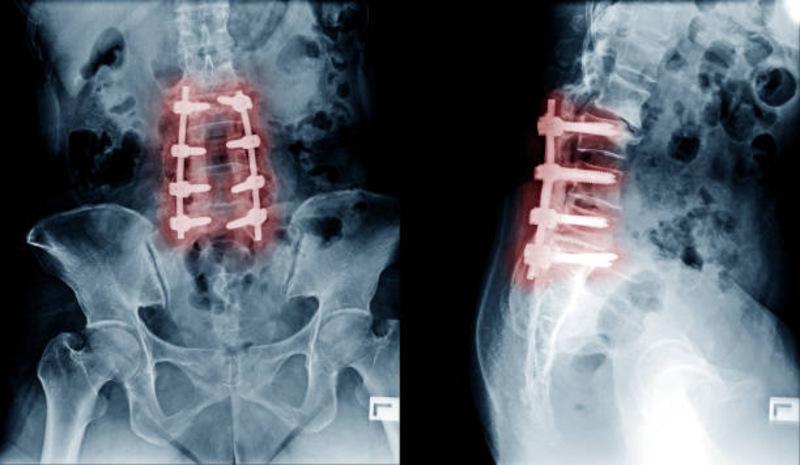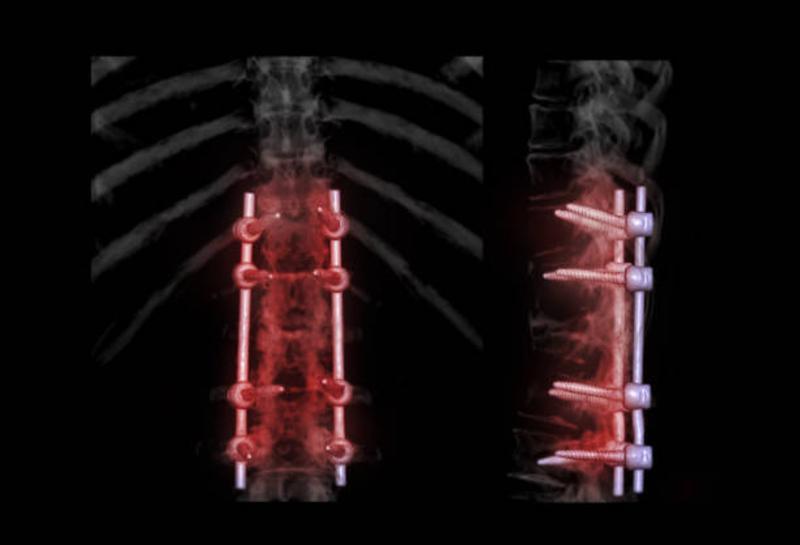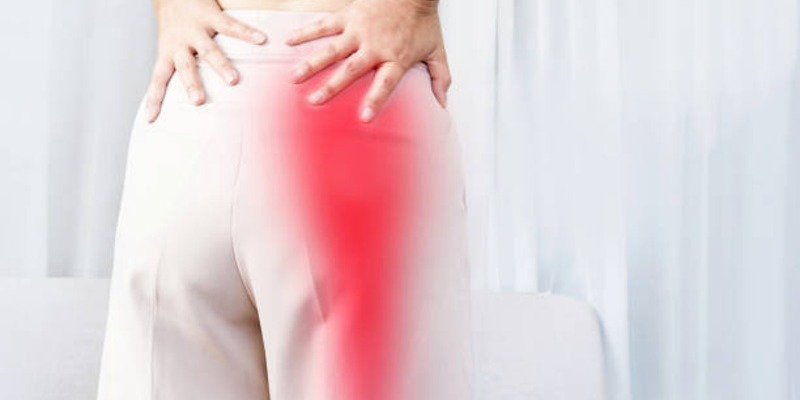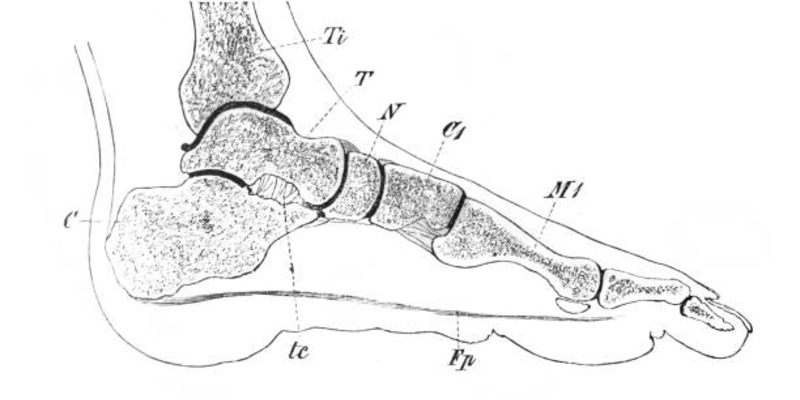What are the Symptoms of Degenerative Disk Disease?
Dec 03, 2023 By Madison Evans
Degenerative disc disease is a fairly common condition affecting millions of people every year. As you age, the discs between your vertebrae wear down and become less able to absorb shock in the spine. This can cause pain, stiffness, and even damaged nerves which lead to other symptoms that affect your everyday life. Understanding this condition – what causes it, how it’s diagnosed, and how to treat it – can help you manage your own experience with degenerative disc disease more effectively. In this blog post we will review all aspects of this disorder so that you have the information necessary for making informed decisions about care and treatment for yourself or someone close to you who may be suffering from degenerative disc disease.
Causes of Degenerative Disc Disease:
Here are the primary causes of degenerative disc disease:
Age:
As we age, our discs degenerate. Over time, this can lead to a breakdown in the cushioning materials which leads to pain and discomfort when pressure is applied to the spine.
Injury:
An injury or trauma to the spinal area can cause damage to the cushioning material that protects the discs. Additionally, an injury can cause inflammation which can make it more likely that disc degeneration will occur over time.
Posture:
Poor posture creates a strain on the spine and can lead to disc wear and tear. If you sit or stand for long periods of time without changing your position, this could contribute to the eventual breakdown of the disc.
Genetics:
Some people are born with a genetic predisposition to developing disc degeneration more easily than others.
Lifestyle choices:
Smoking, not engaging in regular physical activity, and/or being overweight can increase the risk of developing degenerative disc disease.
Symptoms of Degenerative Disc Disease:

Here are some of the common symptoms associated with degenerative disc disease:
Early Signs:
Early signs of degenerative disc disease can include aching, stiffness, or pain in the neck and back.
Progression:
As the condition progresses over time, the pain may become chronic and even spread to other areas of the body such as legs, arms, and shoulders.
Nerve Impingement:
Another symptom is nerve impingement which can cause numbness or weakness in a limb. Other symptoms such as tingling or burning sensations can also be associated with nerve impingement.
Mobility:
Limited mobility in the back, neck, and shoulders due to pain or stiffness can also be a symptom of this type of disc degeneration.
Back pain:
The most common symptom of degenerative disc disease is back pain, which can range from mild discomfort to severe pain.
Leg Pain:
Pain may also present in the buttocks, hips and/or legs. It can be felt on one side or both sides of the body.
Stiffness:
You may experience stiffness in the affected area(s), making it difficult to move or participate in daily activities.
Muscle Spasms:
This is a common symptom that can cause a tight feeling in your back muscles.
Treatment Options and diagnosis of Degenerative Disc Disease:

1: Primary treatment options:
Physical Therapy:
Physical therapy is one of the best treatments to help manage pain and reduce inflammation associated with this disorder. Exercise and stretching can also help strengthen muscles in the affected area, which could improve your range of motion.
Medication:
In cases where pain is severe or chronic, certain medications such as nonsteroidal anti-inflammatory drugs (NSAIDs) or muscle relaxers may be prescribed to help reduce the pain and inflammation.
Injections:
Steroid injections can also be administered to help relieve pain and inflammation in the affected area.
Non-surgical treatments:
Other non-surgical treatments such as acupuncture, massage therapy, or laser therapy may also be recommended to help manage symptoms.
Surgical treatment:
In cases where the pain or symptoms become unmanageable with other treatments, surgery may be recommended. Depending on the severity of the condition, it could involve minimally invasive techniques such as laser ablation or a more complex surgery to replace damaged discs in the spine.
2: Diagnosing degenerative disc disease:
X-ray:
An X-ray of the spine can help uncover any changes in the alignment or shape of the vertebrae and discs. This could indicate an underlying issue such as disc degeneration or damage to a disc’s cushioning material.
MRI:
An MRI is an imaging test that can provide a more detailed look at the spine. It can help uncover any changes in the shape or structure of the discs and vertebrae, as well as any areas where there may be herniated discs or other problems that could cause pain and other symptoms.
CT scan:
A CT scan is similar to an X-ray, but it can provide a more detailed view of the spine. This type of imaging test can uncover any changes in the shape or structure of the vertebrae and discs that could be associated with degenerative disc disease.
EMG:
An electromyography (EMG) test measures electrical activity in muscles. It can help identify muscle weakness, spasms, or other issues that could be causing pain and other symptoms associated with degenerative disc disease.
Physical Examination:
A physical examination is also used to diagnose this condition. This includes a full medical history and may include tests such as manipulating the spine or range of motion tests to determine which areas may be affected by degenerative disc disease.
Prevention Tips:
Here are some tips for preventing degenerative disc disease:
- Maintain proper posture while sitting and standing.
- Take regular breaks when sitting or standing for extended periods of time.
- Exercise regularly to strengthen the core muscles which can support the spine and help prevent disc breakdown.
- Have a balanced diet that is rich in vitamins and minerals which can help maintain healthy discs and bones.
- Quit smoking if you are a smoker, as it is linked to an increased risk of developing this condition.
- Wear comfortable shoes with good arch support when walking or running to prevent added strain on the spine.
- Avoid activities that involve heavy lifting or twisting of the spine, as these can put stress on the discs- Get regular checkups with your physician to monitor any changes in your spine's health.
Conclusion:
Degenerative disc disease is a condition that can cause pain and other symptoms in the neck, back, or limbs. While it is not curable, there are many treatment options available to help manage the symptoms. It is also important to take steps to prevent this condition by maintaining proper posture and exercising regularly. If you experience any of the symptoms associated with degenerative disc disease, it is important to speak to your doctor for diagnosis and treatment.
-
 Dec 27, 2023
Dec 27, 2023Menstruation cycle and blood color, what helps with period cramps, late period, and all the facts you need to know.
A Quick Guide: 10 Must-Know Period Facts
-
 Oct 01, 2023
Oct 01, 2023Understanding Sciatica: Causes, Symptoms and Treatment Option
Uncover the key aspects of sciatica, a nerve condition causing discomfort in the lower back and legs. Understand its causes, symptoms, and treatment options to manage and alleviate pain effectively.
-
 Jan 21, 2024
Jan 21, 2024Comprehensive Guide to Plantar Fasciitis Treatment Options
Discover effective treatment options for plantar fasciitis, from at-home remedies to medical interventions. Understand the condition and improve your foot health.
-
 Aug 01, 2024
Aug 01, 2024Solutions for Winter Dry Scalp
Find effective solutions to fix dry scalp, a common winter hair problem, and keep your hair healthy.
